Microwave-Accelerated Extraction — SW-846 Method 3546 and Beyond
Special Issues
Microwave-accelerated extraction (MAE) is described and evaluated. The latest enhancements to this technology are discussed from a hardware and applications perspective.
Microwave-accelerated extraction (MAE) was evaluated by the authors of this review in 1999 (1). Since this time, the United States Environmental Protection Agency (USEPA) has promoted the use of SW-846 Method 3546 using MAE for the extraction of organic compounds from solid matrices. Applications for this technique have increased and MAE equipment has been streamlined to dramatically increase throughput and ease of use. This article reviews the latest enhancements to this technology from a hardware and applications perspective.
In 1999, microwave-accelerated extraction (MAE) was a relatively new technique for solvent extraction, and approvals were only obtained when the technique became mainstream. The first approval was from the state of California under its California Environmental Technology Certification programme for the extraction of semivolatile organic compounds in soil, sediment, and sludge (2). As the technique substantially reduces sample extraction time and solvent consumption, the sample turnaround time for data generation improved significantly. The certification was intended to encourage use of the technique where data quality objectives could be met by its use.
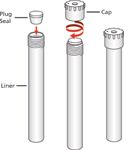
The United States Environmental Protection Agency's (USEPA's) Test Methods for Evaluating Solid Waste (SW-846) provides a comprehensive source of information on sampling, sample preparation, analysis, and reporting for compliance with the Resource Conservation and Recovery Act (RCRA). SW-846 outlines test procedures used to characterize solid waste in accordance with 40 CFR Part 261, Identification and Listing of Hazardous Waste. The sample preparation and analytical procedures (or determinative steps) are categorized by the analyte, which can be inorganic or organic.
The sample matrix and analytes define the SW-846 3500 series sample extraction methods. The matrix is either aqueous, solid, an air sampling train, or non-aqueous soluble. Analytes are characterized as either nonvolatile or semivolatile organic compounds. All samples analyzed for non-volatile or semi-volatile organic compounds require a solvent extraction step, with the exception of non-aqueous solvent soluble samples.
Microwave extraction (Method 3546) was formally included in SW-846 in Final Update IV of the Third Edition of the manual in 2008 (3). Microwave extraction is the process of heating solid sample–solvent mixtures in a sealed (closed) vessel with microwave energy under temperature-controlled conditions. The temperature is elevated significantly above the atmospheric boiling point of the solvent, accelerating extraction while giving performance comparable to the standard Soxhlet method. Solvent consumption is only 25–50 mL per sample.
The American Society for Testing and Materials (ASTM) is an international standards organization that publishes voluntary consensus technical standards, including test methods that define how a method is performed and the accuracy of the result. Test results may be used to assess compliance with a Standard Specification. The ASTM has three test methods that incorporate the MAE technique:
- ASTM 5765 – 05 (2010) is the Standard Practice for Solvent Extraction of Total Petroleum Hydrocarbons from Soils and Sediments Using Closed Vessel Microwave Heating (4). The soil or sediment sample is extracted with acetone or hexane in a sealed microwave transparent vessel using microwave heating to an internal temperature of 150 °C, producing an extract suitable for analysis by gas chromatography (GC) or gravimetric techniques.
- ASTM D6010-12 is the Standard Practice for Closed Vessel Microwave Solvent Extraction of Organic Compounds from Solid Matrices. The soil, sediment, sludge, or waste sample is extracted in an acetone-hexane mixture at 115 °C producing an extract suitable for analysis of semi-volatile or volatile organic compounds by GC or gas chromatography–mass spectrometry (GC–MS) (5). This standard practice reduces sample preparation time, solvent consumption, and operating costs.
- ASTM D7210-13 is the Standard Practice for Extraction of Additives in Polyolefin Plastics. This provides guidelines for extracting phenolic antioxidants, phosphite antioxidants, UV stabilizers, antistatic agents, and slip additives from milled polyolefin plastics (6). It now includes an MAE technique for subsequent analysis of the extract by chromatographic techniques.
Phthalates are mainly used as plasticizers to increase flexibility and durability, but they are linked to health issues and are being phased out of use. The Consumer Product Safety Commission (CPSC) issued Test Method: CPSC-CH-C1001-09.3, a Standard Operating Procedure for Determination of Phthalates in April 2010 (7). Phthalate content analysis in children's toys and childcare articles was the result of standards passed in the Consumer Product Safety Improvement Act Section 108. The test method uses a microwave-extraction technique based upon EPA Method 3546 as an acceptable method of extraction.
Advances In Hardware And Instrumentation
MAE involves heating solid sample–solvent mixtures with microwave energy to separate compounds from the sample to the solvent. The extraction is most commonly performed in a sealed vessel under temperature-controlled conditions. This provides a significant temperature elevation above the atmospheric boiling point of the solvent and accelerates the extraction process.

Table 1: Approved microwave accelerated extraction techniques.
Batch Microwave Systems: The components of the batch style microwave system remain the same as when reviewed in 1999 (1) in terms of microwave energy generation, application of microwave energy to the sample load, safety concerns, sample stirring, and indirect heating. However, there have been significant enhancements in terms of its "intelligence", vessel technology, and temperature control. This review focuses attention on these areas of the batch microwave system for solvent extraction applications (see Figure 1).
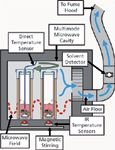
Figure 1: Representation of a batch (multimode) microwave extraction system.
Recent systems have a level of "intelligence" not present in earlier versions. The latest systems possess libraries of predefined methods loaded into software with the capability to count the number of samples and recognize the vessel type loaded — this enables "one-touch" operation. A method is selected by the user based on the sample matrix. The sample is then weighed into the vessel, solvent is added, and the vessel is sealed. The turntable with the vessels is then placed into the system cavity. On pressing the start button, the system can then determine the vessel type and number of vessels, subsequently applying the correct level of microwave energy to meet the method-defined temperature for its hold time to complete extraction. This minimizes operator error as it automatically defines the input power levels needed for different numbers of samples in the system and the conditions for the extraction.
Past generation vessels were assemblies containing six components that were rather cumbersome, and only 12–14 samples could be loaded into the system at one time. To properly seal vessels, a torque wrench was required. The latest vessel technology now only has three components — a vessel body, a plug seal, and a cap — simplifying assembly. Figure 2 represents an example of this design.
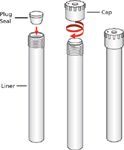
Figure 2: Microwave extraction vessel components and assembly.
With the reduction in the number of components and size, up to 41 samples can be processed for each batch using 75-mL vessel assemblies. When processing larger scale samples, 100-mL vessel assemblies are available that have a throughput of 24 samples for each batch. Both vessel sizes have a built-in pressure relief mechanism for safety purposes. If the pressure inside the vessel exceeds its operating limitations, the vessel will automatically vent to relieve the internal pressure.
The 100-mL vessel assemblies can be used with an optional disposable glass liner inserted inside the vessel liner. This component insertion eliminates the need to clean the vessel liner in between runs, eliminating issues associated with carry over contamination. Table 2 compares modern features of currently available batch-type MAE systems on the market.
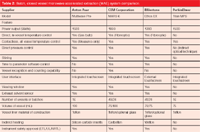
Table 2: Batch, closed vessel microwave accelerated extraction (MAE) system comparison.
Previous generation systems used a temperature sensor inserted into one of the vessel assemblies containing a sample with solvent to create a feedback control loop regulating microwave input power to maintain target temperature. This assumed equivalent absorbtion for all samples in the system. This temperature technology has since been replaced with a floor-mounted temperature sensor that measures the temperature of all samples as they rotate inside the system. The system then takes an average of all the sample temperatures measured to regulate the microwave input power for the temperature control. The enhancement improves control over the whole extraction process and removes the need for an operator to insert a temperature probe into one of the sample vessel assemblies. Figure 3 shows vessel-to-vessel temperature variation and is typical for all vessel temperature controlled systems.
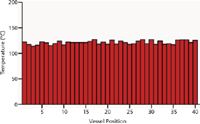
Figure 3: Graphical representation of temperature versus vessel using "all vessel" temperature control.
The discussion up until this point has related to batch style microwave systems or systems that extract a batch of samples at one time. These systems are well-suited to the needs of laboratories processing environmental samples.
Sequential Closed Vessel MAE Systems: Microwave systems that process samples sequentially have recently been introduced for extraction applications. The systems consist of a microwave component with a relatively small "focused" cavity, and an automated vessel handling component that feeds and removes vessels containing sample to and from the microwave system cavity.
When samples are introduced into the microwave system cavity, vessels are sealed so samples can achieve elevated temperatures and pressures during the microwave irradiation cycle. The maximum operating conditions for vessels are up to 300 °C and 450 psi (28 bar) — easily meeting conditions needed for extraction applications.
Temperature is monitored and measured within each vessel using an infrared sensor mounted in the cavity. Temperature data is used to regulate the microwave input power and control the temperature in the same way as the batch systems. Sample pressure is measured using a sensor in the component that "seals" the vessel into the microwave system cavity. The component measures the deflection of the vessel cap as pressure is generated during the irradiation cycles causing the cap to move outward. The system stirs the sample solvent mixture in the vessel using a magnetic component located under the cavity floor and a magnetic spinbar placed in the extraction vessel. At the end of the irradiation cycle, the sample is automatically cooled using compressed air, rapidly decreasing the temperature and pressure of the vessel. The "cool down" time is reduced resulting in turnaround times as low as five min per sample. Figure 4 depicts a typical design of a sequential style MAE system.
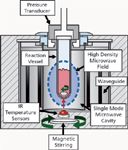
Figure 4: Representation of a focused (single-mode) microwave extraction system.
Vessels used with sequential style systems are available in sizes from 5–80 mL with a working volume range of 2–50 mL respectively. The vessel material is normally glass, with quartz as an option. Caps have a Teflon sealing surface between the cap and vessel lip to minimize contamination issues. The rack size, or the number of vessels, that can be held for automated processing is variable — most commonly 48 or 60 of 10-mL size vessels and 24 for 80-mL size vessels. Table 3 provides a comparison of the important features of the sequential MAE systems on the market.
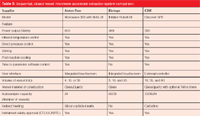
Table 3: Sequential, closed vessel microwave accelerate extraction system comparison.
The potential benefits of a sequential versus a batch style microwave system are:
- The option to use unique extracting conditions for each sample.
- Selection of precise temperature control for every sample.
- Different sample types can be processed within a "rack" of samples.
- Samples can be processed with different extracting solvents within a "rack" of samples.
- A sample can be immediately removed after completion for post extraction handling.
- Small sample sizes/solvent volumes can be processed (where feasible) with the 10-mL vessel.
This sequential approach provides more flexibility than with a batch-style system. Both systems apply microwave energy to sample–solvent mixtures at elevated temperature and pressure under controlled conditions with sample stirring to accelerate the extraction process. For laboratory scientists, the sample variety, throughput, and objectives will define which system is better suited for their needs.
Solvent-Free MAE System: Milestone recently introduced a system capable of performing solvent-free microwave extraction following a collaboration with the Université d'Avignon et des Pays de Vaucluse (Avignon, France). The system uses a technique of microwave hydrodiffusion (a type of steam distillation) followed by gravity separation to produce essential oils in a concentrate form from raw aromatic plant materials. The technique is performed at atmospheric conditions and does not use any solvent or added water. Internal heating of the water within the plant material causes cell disruption and release of the extract (water and essential oils). The extract is then gravity fed into a collection system underneath the microwave system to separate the essential oil from the water. Samples are processed one at a time in a 1- to 2-L proprietary glass vessel using a microwave power and time- or temperature-based method. Key benefits are enhanced yield, quicker isolation times, and an environmentally friendly approach.
New Applications Areas
The introductory section of this review discussed approvals granted for the MAE technique. For a technique to be approved for a specific application, it must have records documenting its performance for a wide-variety of matrices. The primary use of MAE is in environment-related applications. However, scientists typically explore other applications for existing technologies once they have been proven to work. This section looks at other applications for the MAE technique.
Mercury Speciation: The total mercury concentration in a sample does not provide an accurate picture for "cause–effect" relationships. The distribution of mercury species can provide an improved understanding of data relationships leading to more accurate conclusions. In 2013, Leng and co-workers published an article titled "Speciation Analysis of Mercury in Sediments by HPLC Following Microwave-Assisted Extraction" (7). The authors proposed the combination of microwave-assisted extraction of samples with HPLC–VGAFS determination. It provided a sufficiently low detection limit to determine MeHg+, EtHg+, and Hg2+ in sediment samples. The limits of detection were 0.013 ug/L, 0.022 ug/L, and 0.011 ug/L for mercury species using the microwave technique. The technique was validated by applying it to two certified reference materials — IAEA-405 and ERM-CC580 — that gave good agreement with the certified value.
Antioxidants: There are potential health advantages to diets rich in antioxidant compounds that include lowering the risk of cardiovascular disease and certain cancers. In 2011, Mathur and co-workers investigated MAE versus traditional solvent extraction techniques for screening plant extracts for antioxidant activity (9). The MAE technique was optimized on 20 g of plant samples using methanol as the extracting solvent at 80 °C with a 20 min hold time. Extracts were screened for in vitro antioxidant activity. The results indicated that extracts prepared by the MAE technique showed potent antioxidant activity relative to the traditional method of extraction.
Active Pharmaceutical Ingredients: The extraction of active pharmaceutical ingredients (APIs) from solid dosage forms is critical to validate concentrations within formulations. Brannegan published a chapter titled "Extraction Techniques Leveraging Elevated Temperature and Pressure" within Sample Preparation of Pharmaceutical Dosage Forms: Challenges and Strategies (10). The application of MAE can facilitate rapid troubleshooting of low potency results and help identify the source of these issues. MAE can be performed in parallel, samples can be stirred during the extraction step, and rapid heating of the sample is provided, therefore providing solubilization and extraction of APIs from the solid dosage forms. The chapter provides case studies documenting the benefits of MAE to troubleshoot low potency results.
RoHS/WEEE: The adoption of the "Restriction of Hazardous Substances (RoHS) and Waste from Electrical and Electronic Equipment (WEEE) Directives" by the European Union (EU) created a problem. There were no reliable, cost-effective methods of testing for the presence of high-mass unit additives such as polybrominated biphenyls (PBBs) and polybrominated diphenyl ethers (PBDEs) in polymer samples. NSL Analytical resolved the problem by developing an MAE technique for the extraction of PBB and PBDE from polymers and subsequent analysis by GC–MS (11). The technique provided savings in time and cost (labour, solvent cost, and disposal) while providing 99% recovery of the additives from sample sizes of only 0.5 g.
Food Safety: Dicyandiamide is a white crystalline compound primarily used for the production of melamine. The detection of dicyandiamide in milk-based products can be indicative of melamine, responsible for kidney stones. Shen and coworkers developed a MAE method in combination with liquid chromatography tandem mass spectrometry (LC–MS–MS) for the determination of dicyandiamide residue in infant formula (12). The extraction was performed in 5% formic acid with recovery in the range of 83–96% at levels of 0.25 mg/kg.
Essential Oils: Essential oils are highly concentrated, volatile oils that can be extracted from aromatic plants. The traditional approaches to extract the essential oils use a chemical process of steam distillation or solvent extraction, or a mechanical process using a cold press technique. Vian and associates developed a microwave-assisted technique for the extraction of essential oils without the use of added solvents or water — microwave hydrodiffusion and gravity, a new technique for extraction of essential oils (13). The microwave extracted essential oils were produced with yields and aromatic profiles similar to standard methods but in one-sixth of the time.
Future
Over the past decade, MAE has become a mainstream sample preparation method, because of advances in vessel technology, software control, and throughput. The remaining obstacle for the batch-style approach is sample–solvent separation after the extraction step and before the analytical step. The majority of future application areas are likely to be focused on developing flexibility of sequential systems. The ability to control conditions for each sample extraction will enable scientists to rapidly develop methods for a variety of sample types and analytes. This is especially true for those compounds that might degrade based upon temperature variability in a batch process.
Current research being performed on sequential systems includes extraction of fatty acid methyl esters (FAMEs) in a wide variety of food samples, as well as amino acid hydrolysis for adulteration testing in products — such as skimmed milk and infant formula. Work is also being conducted to test the possibility of performing simultaneous hydrolysis and extraction of total fats in foods. With the increasing levels of food safety and fraud concerns, it is likely that this technique will expand significantly in the food testing arena in the coming years. Other areas of research include the extraction of AZO dyes from textiles that have been banned in Europe since 2003, as well as metabolite extractions in the biological field of study.
Summary
Over the past 14 years, MAE has become well-accepted for environmental testing. Regulatory approval by the EPA, ASTM, CPSCs, and others validate the technique as an analytical method. The combination of high-throughput, solvent reduction, and ease of use make it an excellent alternative to other extraction techniques. Advances in temperature measurement, software control, vessel technology, and automation have allowed expansion of the technique into the regulatory environmental arena, a trend that should continue.
Bobbie McManus is the Director of North American Sales at CEM Corporation. During her 25 year career at CEM, she has served as Product Manager for both the Analytical and Process areas where she participated in several AOAC studies and approvals for new technology.
Michelle M. Horn is a scientific writer for CEM Corporation. She writes and edits a variety of content in the areas of chemistry, biochemistry, and peptide synthesis.
Steve Smith is illustrator extraordinaire for CEM Corporation. He provides marketing communication support for their laboratory grade microwave system product offerings.
Bob Lockerman is the Analytical Product Line Manager for CEM Corporation. He oversees the microwave-based, solvent extraction product offerings.
Greg LeBlanc is a New Business Development Manager with CEM Corporation. He has over 28 years of experience in the use of laboratory microwave systems for sample preparation as a front end for chromatographic and spectroscopic analysis. Direct correspondence to: Greg.Leblanc@cem.com
References
(1) G. LeBlanc, LCGC 17(6S), S30–S37 (1999).
(2) California Regulatory Notice Register, Register 2000, December 15, 2000, Volume 50-Z, pages 2136 with Evaluation Report
(3) Federal Register, Vol. 73, No. 2, Thursday, 3 January 2008, Notices, pages 486-489.
(4) Standard Practice for Solvent Extraction of Total Petroleum Hydrocarbons from Soils and Sediments Using Closed Vessel Microwave Heating, DOI: 10.1520/D5765-05R10, (http://www.astm.org/Standards/D5765.htm).
(5) Standard Practice for Closed Vessel Microwave Solvent Extraction of Organic Compounds from Solid Matrices, DOI: 10.1520/D6010-12, (http://www.astm.org/Standards/D6010.htm).
(6) Standard Practice for Extraction of Additives in Polyolefin Plastics, DOI: 10.1520/D7210-13 (http://www.astm.org/Standards/D7210.htm).
(7) Standard Operating Procedure for Determination of Phthalates, (http://www.cpsc.gov/PageFiles/110957/CPSC-CH-C1001-09.3.pdf) (2010).
(8) Geng Leng, Li Feng, Shao-Bo Li, Ping Yang, and De-Zhong Dan, LCGC Europe 26(5), 250–258 (2013).
(9) A. Mathur, D. Mathur, G. Prasad and V.K. Dua, Asian Journal of Biochemical and Pharmaceutical Research 1(2), 410–418 (2011).
(10) Beverly Nickerson, Ed. Sample Preparation of Pharmaceutical Dosage Forms Challenges and Strategies for Sample Preparation and Extraction, (2011).
(11) A. Kovalenko, and B. Bacher, Microwave Extraction Provides More Reliable Analysis of High Mass Unit Additives, (
)
(12) Y. Shen, C. Han, X. Zhou, and X. Chen, J. Dairy Sci. DOI: 10.3168/jds.2013-6881, (2013).
(13) M. Vian, X. Fernandez, F. Visinoni, and F. Chemat, J. Chromatogr. A 1190, 14–17 (2008).
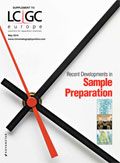
Polysorbate Quantification and Degradation Analysis via LC and Charged Aerosol Detection
April 9th 2025Scientists from ThermoFisher Scientific published a review article in the Journal of Chromatography A that provided an overview of HPLC analysis using charged aerosol detection can help with polysorbate quantification.
Analyzing Vitamin K1 Levels in Vegetables Eaten by Warfarin Patients Using HPLC UV–vis
April 9th 2025Research conducted by the Universitas Padjadjaran (Sumedang, Indonesia) focused on the measurement of vitamin K1 in various vegetables (specifically lettuce, cabbage, napa cabbage, and spinach) that were ingested by patients using warfarin. High performance liquid chromatography (HPLC) equipped with an ultraviolet detector set at 245 nm was used as the analytical technique.
Removing Double-Stranded RNA Impurities Using Chromatography
April 8th 2025Researchers from Agency for Science, Technology and Research in Singapore recently published a review article exploring how chromatography can be used to remove double-stranded RNA impurities during mRNA therapeutics production.










